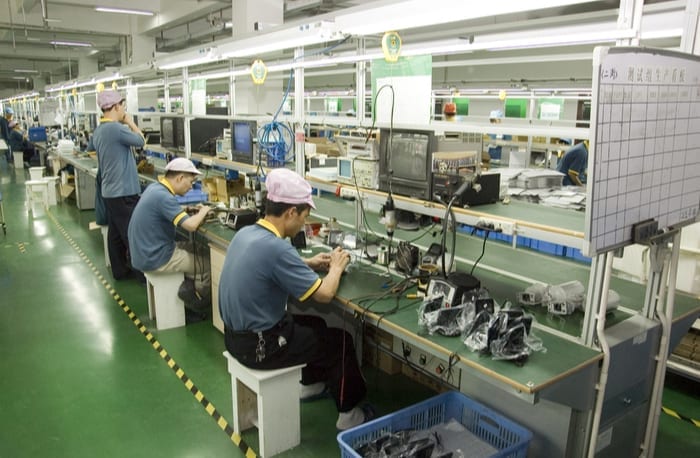Modular VS Integrated Systems war is exactly like a war between David & Goliath. But the only difference in this one is Goliath has been dominating David until now. But there seems hope of ray for David after all. The modular system is not something new; it has been talked about for almost the tech sector’s rise. However, most of the devices we used at the dawn of computer tech were modular. So what resulted in the dusk of the modular systems and the rise of integrated ones. Let’s dig in to know more on our blog of
Ying & Yang Of Modular VS Integrated Systems
Before getting into the debate of modular vs. integrated systems, let us first understand what it means. Modular systems were the norm in the 90s and mid-’20s. It means every piece of tech was made keeping in focus the reparability, customizations, and reusability. This, however, changed when a mass came into contact with the technology.

With the sudden rise of technology and quick adoption by many, a vacuum created by the demand sector and the supply sector couldn’t just keep up. As modular systems require too much-skilled labor, trying to screw every part, was seriously hampering the speed of production. The culmination of the vacuum in supply and the need for speed in the assembly line gave rise to an integrated system, which was perfect for mass production.
Automation also played a significant role as laborers were not required to screw every part to gather. Instead, most of the heavy-lifting was done by the robots gluing every piece together, which process after process made the devices harder to access, which indirectly benefitted the industries. Moreover, now companies can secure significant margins due to the severe cut in the workforce and up-selling newer products when older ones needed repair, which was a considerable initiative for companies to make everything less reparable.
The current number of smartphone users in the world today is 3.8 billion. This means 48.20% of the world’s population owns a smartphone; a major credit goes to fast and cheaply produced integrated devices. In 2020, the total number of smartphones sold was around 1.38 billion worldwide. Undoubtedly integrated systems played a significant role in reaching out to the masses, even in middle-income countries, thanks to their lower cost of manufacturing and fast-paced production.
Modular VS Integrated Systems:
The Dark Side Of The Integrated System

Undoubtedly integrated systems have their pros, but it is not entirely devoid of cons. This fast-paced “use and throw mentality” hasn’t played well in the environment and nature. For example, global E-waste generation reached a record high of 53.6 million metric tons in 2019 a total of 2.01 billion tonnes of municipal solid waste annually. This bullish trend is not seen coming to a halt anytime soon. It is the electronic waste the world is worried about and the collateral poisoning it does to the surrounding. About 70 percent of heavy metals, including Lead, found in landfills come from e-waste.
Leaching has long been a huge problem associated with the improper disposal of e-waste. When electronics are tossed into landfills, leaching combines with other sources of lead contamination in soil, making it worse. Not only that but Lead in improperly disposed of e-waste can also contaminate groundwater. And this is Lead; we haven’t even talked about toxic components such as mercury, cadmium, polybrominated flame retardants, barium, and lithium.
The Modular Struggles To Rise

It is not that modular systems haven’t tried to raise. Google’s modular phone “Project ARA” made the news or at least a wave. It doesn’t matter how big, but still, it has grabbed the attention of many just because it was able to take modularity to the next level. Previously modularity has been thought of as something only techies and geeks do in their bedroom. Trying to program and assemble every part and things a regular folk wouldn’t bother about. However, with the innovation of project ARA, the whole modularity concept became cool.
The big thing is they were able to do it on the most integrated devices possible, smartphones. Now you suddenly didn’t require a tech head to swipe a low-resolution camera or a memory out of your devices. This made the whole arrangement look very cool but guess it was too ahead of its time. The markets didn’t respond well, and the project never took off the runway. Google wasn’t the only one trying to create a market; Motorola, too, tried it with Moto Mods. However, they could take it to the market and be quite honest; the market response was average. Moto mods were the additional cost on the mobile. Their idea wasn’t even near to what google project ARA wanted.
What Changed Now

Right to repair has been gaining ground against big tech for a while. Still, the final blow was probably Mr. President Joe Biden’s executive order for the companies to include reparability as a part of their design. This can be the turning point in the whole industry as keeping in mind the repairability; modularity may seem more financially secure to the business. An easy escape perhaps, as in spite of repairing or opening the whole phone for camera repair, a simple modular camera replacement would be much more efficient.
What Inspired Us To Write About It

The inspiration behind this is a new curious product by Framework; Framework has brought a new laptop that is completely upgradable and reparable. Meaning you would be able to repair almost every part of it by yourself. It has been made to be repaired, which means, unlike apple, there aren’t any custom-made screws or glue used to assemble the product. The whole laptop has been assembled with only one type of screw. Proper stickers are placed on every component telling its specifications. The problem with modular devices is they are pretty bulky compared to integrated devices. Still, here, too, it gets 10/10 for the device’s portability, lightweight, and slimness.
So think you need a new RAM, pop the hood and upgrade it, same with the memory, wifi, Bluetooth, even the screen. Almost every component is upgradeable, so it is up to you what kind of laptop you want to make: gaming, office, general work, or whatever. No more companies are telling you what you can have.
This might be the slight breeze in front of the gust of integrated systems of the big giants; however, this product has grabbed the attention of a few of us. Therefore, it will be interesting to see how it penetrates the market of us techies and the general market.
Related Post: